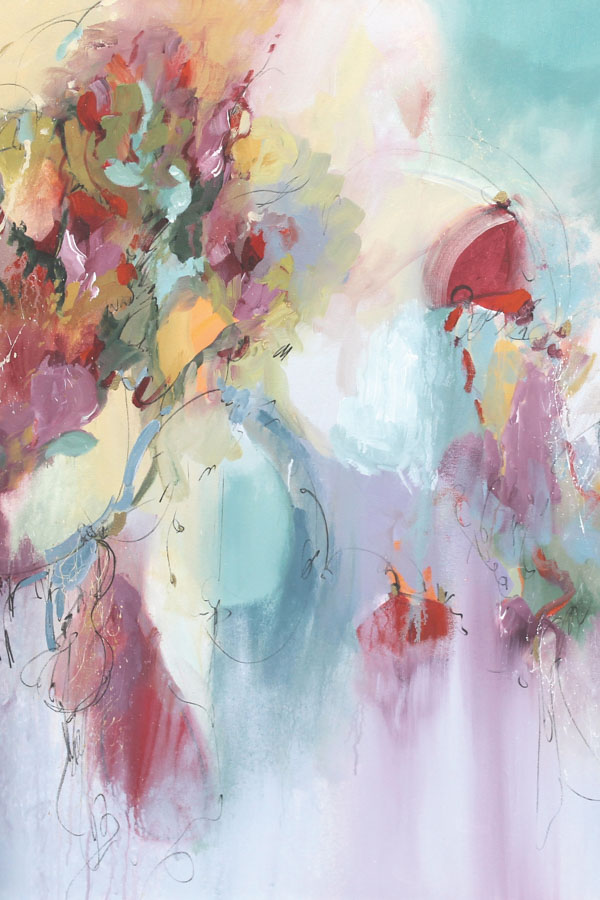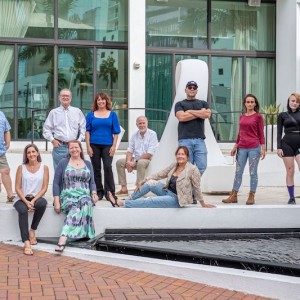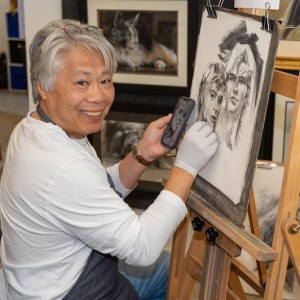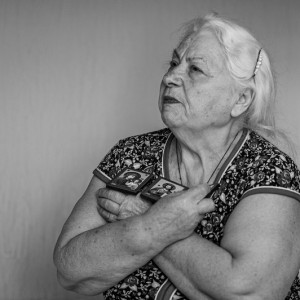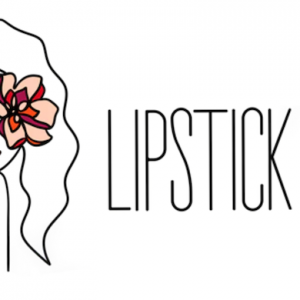Something happened last year, no one can be quite sure what, but celebrated local artist Barbara Krupp went a bit, well, wild. “I went crazy,” Krupp clarifies, referring to her Barbara Gone Wild exhibition, which saw a radical departure from the artist’s signature style, largely eschewing her trademark murky palette and complex blending in favor of clean lines and primary colors. “I just stood at my easel one day and just let it come out,” she says. It took local viewers by surprise, not to mention the folks behind Dabbert Gallery, where she regularly shows (and sells), but Krupp pays no mind. Forever comfortable in uncharted waters, she’s no stranger to the dramatic pivot.
At age 19, Krupp caught the painting bug late and quite by accident, dropping off a friend at painting class. Already in training to be an x-ray technician, she wouldn’t act on it in any serious manner for another 15 years. Then, one day, she knew she had to quit. Her boss said she was crazy. He said he would hold her job for two months while she came to her senses. “I never went back,” she says.
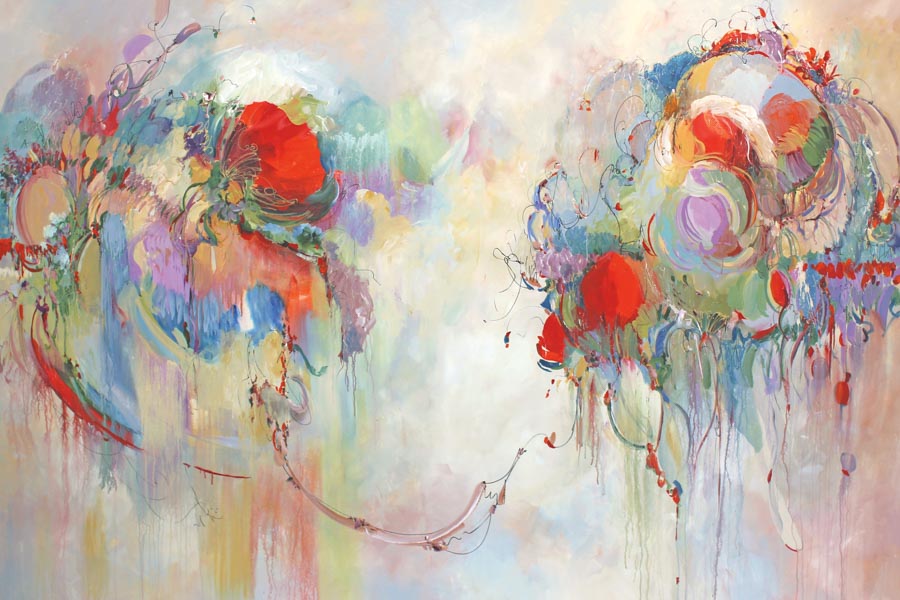
Instead, Krupp hit the canvas, and never stopped, creating fantastical dreamscapes, large-scale and in living color, wondrous but somehow real—like a dimensional fracture offering a window to a more colorful world, forever enticing but barely out of reach. Arriving at an intriguing blend of abstraction and representation, and with a palette speaking more to Monet than Mondrian, she had found her voice. For the moment, at least; it always changes, evolving with the artist. After Barbara Gone Wild, the geometric influence remains in part, but folded into existing sensibilities and constant new influences, like a trip with her granddaughter to Pandora—The World of Avatar, where both marveled at the floating mountains of an alien world. And Krupp knows a thing or two about alien worlds.
“When I start every painting, I have no idea what it’s going to be a painting of—I just put some color down and go,” Krupp says, likening the discovering of a new image to an act of exploration, stepping into a mapless world of countless unknowns and infinite possibilities. But don’t confuse lack of a plan with lack of direction; the artist will know when she arrives where she’s supposed to be. “I can feel it in my breathing,” she says. “When I can breathe correctly, then it’s finished.”
